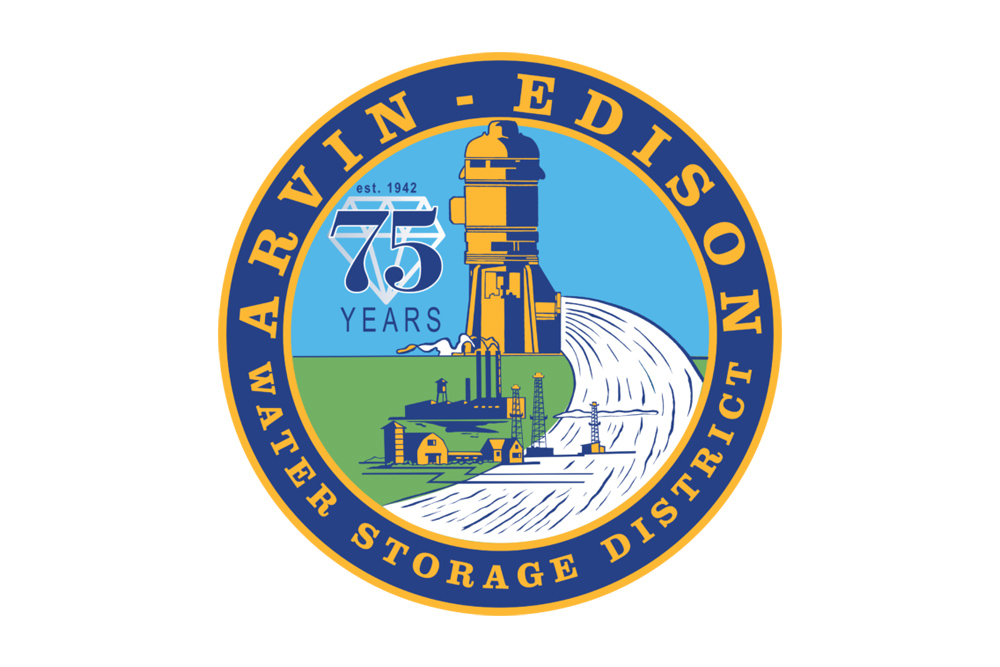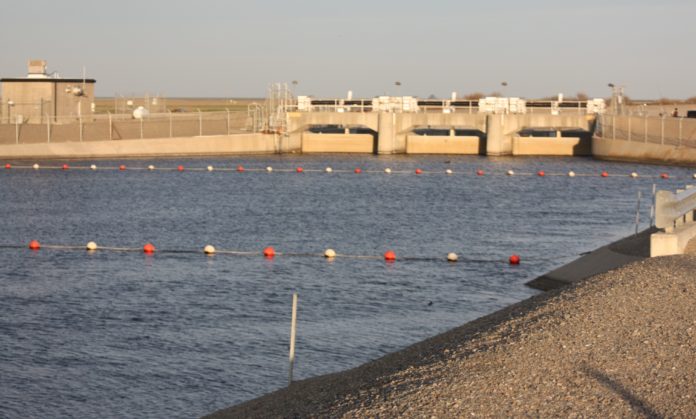The Westlands Water District GSA met on Monday, July 16, 2018 at Harris Ranch Inn, Coalinga. Chairman Don Peracchi called the meeting at 10:00am. Things began with Kiti Campbell introducing attorney Scott Slater who led the workshop. He said safe yield is now codified by SGMA. Before SGMA was the state constitution that defines the reasonable and beneficial use of water. Subsidence is of course not one of these uses. Inelastic subsidence is the main undesirable result in the WWD GSA.
In WWD the amount of water available varies and the GSP has to reflect that. Slater said adapting to changing conditions has to be a part of the plan. The stakeholders need transparent rules whether they choose to follow them or not.
The strategies being looked at start with pumping allocations. This will be tethered to the technical data about the long-term upper and lower aquifer levels. This can vary by area. Slater said a hard cap as opposed to a rolling average probably won’t work in WWD. A pumper can go above and below as long as the reconciliation takes place. This leads to an element of trust. WWD has to search for available water, flood water often. A grower who over pumps can purchase this water to make up what is needed. If a grower gets too far out of line and doesn’t reconcile, well they might be restricted by capping water deficits.
An initial allocation is developed either district wide, management area or subareas by per acre and/or hydrogeology subject to adjustment over time as needed. Take a rolling average over two to five years would be the first step. Every five-years a status report has to be filed with the state to show SGMA compliance. It would be very good to fine tune this so it becomes generational and provides sound planning. A true up will be required but if water users pump less than their allocation, they may be permitted to carry over their allocation. There were concerns from the growers in the audience about the state getting its nose and nuts in the middle of carryover. Slater said there are ways around that by how the GSP is structured. He also said things could have happened 15-years ago that brought on the subsidence  and under SGMA we all get a fresh start. There are mitigation efforts that could keep things correct with the state. A grower spoke up saying he doesn’t like to be threatened with any stick he isn’t holding. He asked about wells that are not causing problems will be dealt with. Slater said SGMA limits groundwater pumping to what is sustainable and that could well be viewed as the stick. The allocation will be based on acreage and not well output. However, there could be localized situations that could bring about adaptation. The same grower asked if the law could be challenged. Slater said there have been enough basins in the state that have attained sustainability so in his opinion there wouldn’t be a successful challenge. Another grower asked about the impacts on WWD GSA by other neighboring areas. Slater said Campbell has been relentless in communicating with neighboring basins.
and under SGMA we all get a fresh start. There are mitigation efforts that could keep things correct with the state. A grower spoke up saying he doesn’t like to be threatened with any stick he isn’t holding. He asked about wells that are not causing problems will be dealt with. Slater said SGMA limits groundwater pumping to what is sustainable and that could well be viewed as the stick. The allocation will be based on acreage and not well output. However, there could be localized situations that could bring about adaptation. The same grower asked if the law could be challenged. Slater said there have been enough basins in the state that have attained sustainability so in his opinion there wouldn’t be a successful challenge. Another grower asked about the impacts on WWD GSA by other neighboring areas. Slater said Campbell has been relentless in communicating with neighboring basins.
I asked if the underground flows have been determined and the common answer was given – not yet. Slater said there are models being run but they need some polishing. The staff isn’t ready to release figures yet. Slater said there could be a zone allocation or a district wide allocation. That hasn’t been determined yet.
Next Slater said the better the data the better the technical work. It was proposed installation of tamper proof meters on all WWD wells by 2024. WWD would maintain a database on these measures. A grower said it would be very helpful to know what meters would be acceptable since many of the growers are monitoring wells. They also want the readings to be done by telemetry. Other landowner measures suggested voluntarily funding projects such as: Aquifer Storage & Recovery, conservation, trading credits, recharge projects, groundwater allocations and rescheduling.
Slater next spoke about preemptive and reconciliation replenishment. Preemptive would be an opportunistic advance purchase of flood water for increased allocations. Reconciliation would be paying back for over-pumping. One puts more water underground before its used and the other replaces water needed for sustainability. Someone asked if at the end of the five-year period can the water be carried over. Director Sarah Woolf said to be sure to differentiate between ground and surface water. She said surface storage carryover won’t change, this water has to be stored underground. Which everyone agreed with.
Next Campbell said WWD Augmentation Projects were discussed at previous workshops and are  on line at www.wwd.c.gov . Some listed projects were: surface water substitution/in lieu replenishment, brackish groundwater desal and banking. She also mentioned subsurface recharge made of lateral holes drilled below the root zone. She updated the audience saying the first draft of the GSP will be presented to the board by January 2019. The board will adopt the final GSP in December 2019 and the GSP will be presented to the DWR 2020. She reiterated the modeling is being refined. The baseline is complete but it may not be available to the public. A workshop on peer reviews of the modeling can be held. A gentleman asked when WWD acquires extra water should the available water go first to the grower in deficit or the area in most need or how? Slater said ultimately its how the board wants to handle the matter.
on line at www.wwd.c.gov . Some listed projects were: surface water substitution/in lieu replenishment, brackish groundwater desal and banking. She also mentioned subsurface recharge made of lateral holes drilled below the root zone. She updated the audience saying the first draft of the GSP will be presented to the board by January 2019. The board will adopt the final GSP in December 2019 and the GSP will be presented to the DWR 2020. She reiterated the modeling is being refined. The baseline is complete but it may not be available to the public. A workshop on peer reviews of the modeling can be held. A gentleman asked when WWD acquires extra water should the available water go first to the grower in deficit or the area in most need or how? Slater said ultimately its how the board wants to handle the matter.
Peracchi thanked everyone for attending and then invited them to submit recommendations to staff and that was that.
DISCLAIMER OF RESPONSIBILITY; Waterwrights.net strives to provide his clients with the most complete, up-to-date, and accurate information available. Nevertheless, Waterwrights.net does not serve as a guarantor of the accuracy or completeness of the information provided, and specifically disclaims any and all responsibility for information that is not accurate, up-to-date, or complete. Waterwrights.net clients therefore rely on the accuracy, completeness and timeliness of information from Waterwrights.net DAW entirely at their own risk. The opinions expressed in this report are those of the author and do not represent any advertisers or third parties.
ALL RIGHTS RESERVED. Copyright 2018 by Don A. Wright No part of this publication may be reproduced, stored in a retrieval system, or transmitted in any form or by any means, electronic, mechanical, photocopying, recording, or otherwise, without the prior written permission of DAW.
SGMA The Sustainable Groundwater Management Act of 2014 calls for the formation of Groundwater Sustainability Areas within Basins and Sub-basins to develop Groundwater Sustainability Plans.
Westlands Water District
3130 N. Fresno Street, Fresno CA 93703 Phone:559/224-1523
Board: Don Peracchi-President, Dan Errotabere – Vice President, Jim Anderson, William Bourdeau, Frank Coelho Jr., Larry Enos, Gary Esajian, Todd Neves & Sarah Woolf with two o’s.
Staff: Tom Birmingham-General Manager, Jon Rubin-Attorney, Dan Pope-COO
About: Without irrigation, farming in the Westlands area of California would be limited and ineffectual. The history of Westlands is one of continual adaptation, careful water stewardship and advanced technology. By maintaining a fierce commitment to sustainability, the Westlands’ comprehensive water supply system continues to adapt, educate, and surpass conservation goals. Throughout its history, Westlands Water District has demonstrated a lasting dedication to water conservation and recognized that the long-term survival of its farms depends on the effective management of California’s precious water resources. From www.wwd.ca.gov



































